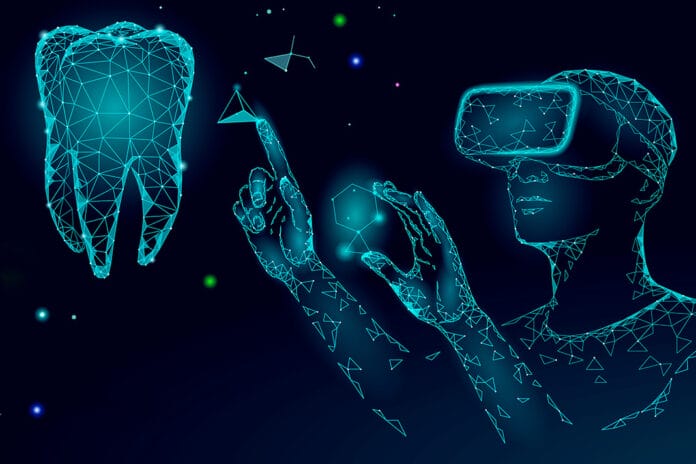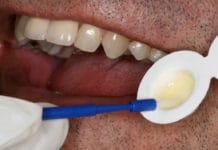As someone who works in dental communications, I’m constantly exploring new ways of interacting with patients to improve trust with providers and compliance with treatment recommendations. All too often, patients are so afraid of dentists and dental care as a whole that they avoid scheduling appointments, be it for preventive appointments or more complex restorative procedures. Incorporating new, nonsedating alternatives, such as the use of virtual reality, could transform the patient care experience.
It’s estimated that as many as one in three dental patients experience anxiety or phobia. As many as one in 10 patients may be so phobic that it affects care plan acceptance.1 As a result, anxious dental patients typically do not comply with recommended treatment plans that are crucial to their health and future well-being, even when they know that their oral health could suffer due to their delay in care. Fortunately, through innovative communication techniques, technology, and media tactics, it is realistically possible to reduce the extent of dental phobia in patients so that they are more likely to follow through with appropriate dental treatments and prophylactic care.
Virtual Reality Exposure Therapy
One such media strategy is virtual reality exposure therapy (VRET). VRET is when technology ‒ such as a headset with goggles with or without additional earpieces ‒ is worn to create a replicated virtual environment so that a participant can experience the sights and sounds of their care facility while knowing that they are in a safe and controlled location. For example, the patient could be in a private consultation room, but the VRET media equipment could make it seem like they were in the middle of a dental operatory.
VRET is something most people tend to associate with video games, but it is quickly gaining ground as a resource for providers and patients in the health industry.
In a piece published in the Journal of Anxiety Disorders in 2019, a randomized control trial was performed to test the efficacy of virtual reality “therapy” on individuals known to have or admitted to suffering from dental phobia/anxiety. In the study, patients who claimed to have dental phobia were given the option of choosing between an informative pamphlet on anxiety management or a virtual reality exposure therapy session. Those that chose VRET showed a “significant reduction in anxiety scores” compared to no change in the people who selected an informative brochure.2 Rather than simply reading about what they could expect on a pamphlet, the patients were able to experience the process virtually, giving them a more realistic perception of what their appointment would entail. This level of familiarity works to desensitize patients with dental anxiety, making it easier for them to transition into the actual care process.
Having seen VRET used firsthand on my child before a lengthy annual brain MRI, it is significant to note my personal observations of VRET. In our family’s instance, it was extremely successful in reducing observed anxiety and apprehension leading up to a long medical procedure. My son requires annual brain scans that often take hours to complete. Being confined in an MRI machine for that long as a child tends to be extremely difficult and scary for most patients, so the majority of them ‒ my son included ‒ receive IV anesthesia to prepare them for their scan. As my son got older, he wanted to try to sit through the scan without “being put to sleep.”
Unfortunately, he was too anxious to do so. That’s when the Child Life Specialist at our hospital introduced VRET at the next scheduled scan. VRET allowed him to “see” the entire scanning process and what it would look like before sliding him into the MRI machine. It took the unknowns out of the experience and made him feel better prepared to tackle the MRI without any anesthesia. After one session of VRET, each of his concurrent MRI sessions was completed without any anxiety or sedative medications.
Such technology could help to desensitize phobic dental patients and make it easier for them to comply with recommended treatment plans or even reduce their need for sedative medications.
Enhanced View of the Dental Environment
Why is VRET so effective in situations involving patient anxiety? If you’re in the field of counseling or marketing, it boils down to a process that professionals refer to as “selective exposure of self and affect management media model (SESAM). SESAM is basically a technique where media methods are used to “expose” someone to something. Such as videos or, in this case, virtual reality (VR).
SESAM techniques can be extremely helpful when someone chooses to “move forward” with selective exposure to something in order to desensitize themselves to a specific feeling, such as fear, phobia, anxiety, or PTSD. A common example would be soldiers suffering from PTSD; they use controlled exposure with the help of a therapist to desensitize themselves to the triggers of their PTSD. The more exposed they are to those triggers ‒ in a controlled environment ‒ the less reactive they are in regard to their anxiety levels. VRET is just one type of technology that allows SESAM to be effective and accessible.
VRET allows a person to virtually put themselves in a dental environment so they can elect to “uphold a sense of stability and identity despite fluid self-perceptions.”3 During VRET, the participant can see the typical dental operatory setup and hear the sounds of common dental equipment. As a result, people with dental phobia can experience realistic media exposure to the dental office, so they’re less afraid of it when it’s time for a real-life appointment.
Similarly, mood management theory (MMT) is where individuals use media to help them regulate their inner states.3 People can select different media types such as VR, music, or movies to help them feel or not feel a certain way. Like the TV show you sit down to watch at the end of a long day because it helps you unwind, MMT assumes that people subconsciously use media as a motivational process.4 In other words, patients might select particular media sources because they feel a certain way but not because they cognitively think about their selection or the reason behind it.
Like listening to music or watching a television show during a dental appointment, VRET can reduce patient anxiety leading up to a particular procedure to help self-regulate their emotions or feelings.
Virtual reality media produces both cognitive and result in behavioral changes.3 It’s essentially because the people using VR can make sense of their virtual surroundings and experiences to “construct a nuanced understanding” of themselves.3
Ultimately, this leads to sensory information that translates into various perceptions of certain environments as if they weren’t synthetic. The virtual immersion is “closely tied to a psychological presence,” as if the person were truly experiencing the synthetic environment.3
Conclusion
Researchers suggest that the information dentists provide to their patients should be improved to facilitate behaviors that allow for better-informed decision-making.5 In the case of VRET, compared to a typed brochure, the VRET proved to be the best solution to reduce anxiety and facilitate decisions in the best interest of the patient’s health. The equipment is similar to the VR headsets already used throughout the country. The VR headset includes built-in speakers, allowing the patient to turn and look in various directions.
While VR headsets are already commonplace in many American households, dental-based VRET software is not. As VR equipment and VR programs become more accessible to health care and dental providers, evidence supports that people with anxiety can effectively combat their phobia/anxiety via VRET. As a result, such individuals will be able to comply with the recommended treatment plans needed to remain healthy.
Before you leave, check out the Today’s RDH self-study CE courses. All courses are peer-reviewed and non-sponsored to focus solely on high-quality education. Click here now.
Listen to the Today’s RDH Dental Hygiene Podcast Below:
References
- Wide Bowman, U., Carlsson, V., Westin, M., Hakeberg, M. Psychological Treatment of Dental Anxiety among Adults: A Systematic Review. European Journal of Oral Science. 2013; 121: 225-234. https://onlinelibrary.wiley.com/doi/pdf/10.1111/eos.12032
- Gujjar, K.R., van Arjen, W., Kumar, R., et al. Efficacy of Virtual Reality Exposure Therapy for the Treatment of Dental Phobia in Adults: A Randomized Control Trial. Journal of Anxiety Disorders. 2019; 62: 100-108. https://www.sciencedirect.com/science/article/abs/pii/S0887618518301610
- Oliver, M. B., Raney, A., Bryant, J. (2020). Media Effects: Advances in Theory and Research (4th ed.). Routledge.
- Reinecke, L. (2017). Mood Management Theory. In P. Rossler, C.A. Hoffner, & L. van Zoonen (Eds.), The International Encyclopedia of Media Effects. John Wiley & Sons, Inc. DOI: 10.1002/9781118783764.wbieme0085. https://onlinelibrary.wiley.com/doi/pdf/10.1002/9781118783764.wbieme0085
- Schouten, B., Hoogstraten, J., Eijkman, M. Patient Participation during Dental Consultations: The Influence of Patients’ Characteristics and Dentists’ Behavior. Community Dental Oral Epidemiology. 2003; 31(5): 368-377. https://pubmed.ncbi.nlm.nih.gov/14667008/










